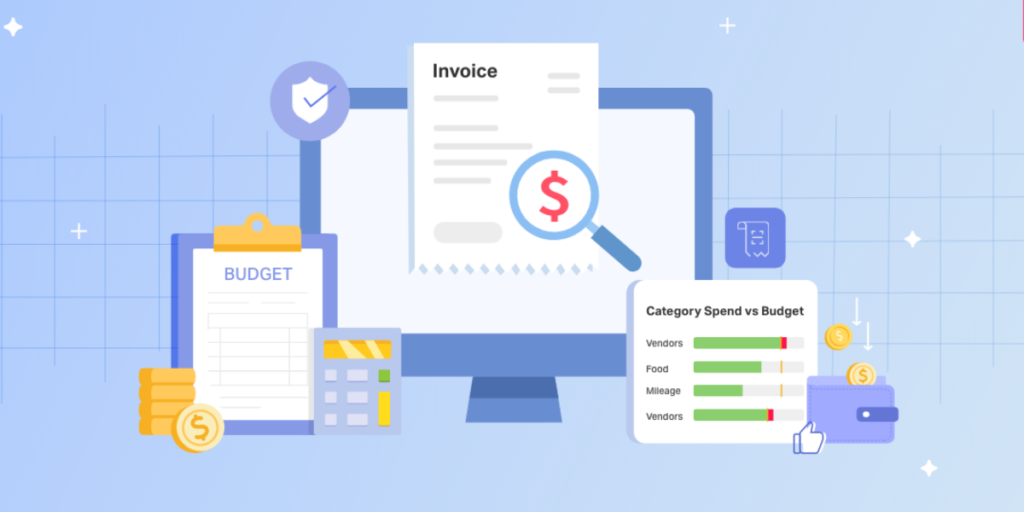The Point: In the realm of modern business, optimizing financial processes has become a strategic imperative. Accounts Payable (AP) automation and Spend Management are two interconnected pillars that play a vital role in achieving this goal. AP automation streamlines the accounts payable process, while Spend Management encompasses a broader range of activities aimed at managing company spend efficiently. This article explores the symbiotic relationship between AP and Spend Management and how linking these processes can lead to increased cost control, accuracy, and overall efficiency within an organization…Enjoy!

Accounts Payable Automation
Accounts Payable automation involves the adoption of technology to streamline and optimize the traditionally manual AP processes. By leveraging advanced technologies such as Artificial Intelligence (AI) and Robotic Process Automation (RPA), organizations can automate various tasks, including invoice processing, data entry, and payment approvals. This increased automation not only accelerates the accounts payable cycle but also significantly reduces the risk of human errors, leading to improved accuracy and compliance.
The Role of Spend Management
Spend Management encompasses a broader spectrum of activities beyond accounts payable. It involves the strategic management of company spending, encompassing procurement, supplier management, outsourcing decisions, and supply chain optimization. The primary goal of Spend Management is to control costs, improve efficiency, and enhance the overall quality of goods and services acquired by the organization.
The Synergy between AP and Spend Management
The synergy between AP automation and Spend Management is undeniable. While AP automation focuses on the efficient processing of invoices and payments, Spend Management takes a more holistic approach to manage the entire spend lifecycle. When these two functions are linked seamlessly, they create a virtuous cycle that leads to numerous advantages for the organization.
#1 – Enhanced Cost Control and Efficiency
By integrating AP and Spend Management processes, organizations gain better visibility and control over their spending patterns. Real-time data from AP automation provides valuable insights into how and where the company’s money is being utilized. This visibility enables proactive cost control measures, identifying areas of potential savings, and optimizing procurement decisions to maximize ROI.
#2 – Reduced Human Errors and Improved Accuracy
Manual data entry in the accounts payable process is susceptible to human errors, leading to costly mistakes and reconciliation challenges. By automating AP processes, the risk of errors is significantly reduced, ensuring that financial transactions are accurate and compliant. The accuracy achieved through automation translates into more reliable data for Spend Management decisions, fostering better-informed strategies.
#3 – Streamlined Supply Chain Management
Spend Management is intricately linked to supply chain optimization. When AP automation and Spend Management are integrated, organizations can align their supplier management and procurement strategies with real-time financial data. This alignment fosters stronger supplier relationships, optimized inventory management, and timely procurement decisions, all of which contribute to a more streamlined and efficient supply chain.
#4 – Improved Supplier Relationships
Timely and accurate payments facilitated by AP automation play a crucial role in fostering strong supplier relationships. A streamlined accounts payable process ensures that suppliers receive their payments on time, leading to increased trust and cooperation. In turn, satisfied suppliers are more likely to offer better terms, discounts, and prioritize the organization’s needs.
#5 – Better Cash Flow Management
Effective cash flow management is a cornerstone of financial success. By combining AP automation with Spend Management insights, organizations can better predict and plan for cash flow fluctuations. Timely invoice processing and optimized spending decisions lead to improved cash flow, allowing the organization to capitalize on investment opportunities and mitigate financial risks.
#6 – Smarter Decision-Making with Real-Time Data
The integration of AP and Spend Management generates a wealth of real-time data that empowers organizations to make smarter, data-driven decisions. Armed with accurate and up-to-date financial information, leaders can assess performance, identify cost-saving opportunities, and adjust strategies proactively to stay ahead in a dynamic market landscape.
SUMMARY
The synergy between Accounts Payable automation and Spend Management has the potential to elevate financial management to new heights. By linking these processes, organizations can achieve enhanced cost control, efficiency, and accuracy. Moreover, the seamless integration of AP and Spend Management creates a continuous cycle of improvement, allowing organizations to evolve and thrive in an ever-changing business environment. As technology continues to advance, embracing this powerful synergy becomes a crucial investment for businesses looking to gain a competitive advantage and achieve sustainable growth in the modern financial landscape.
Sam Palazzolo, Managing Director @ Tip of the Spear Ventures